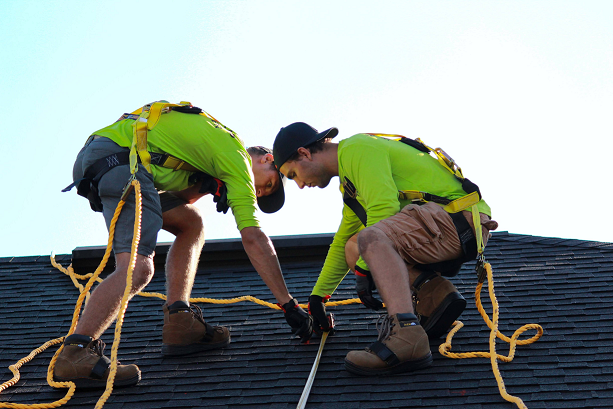Maintaining the roof over your head is a critical aspect of home ownership. This is not simply about keeping up appearances or ensuring value for resale. The well-being of your roof is integral to the structural integrity of your home. Today’s article will bring some top tips from New View Roofing to help keep your roof in splendid shape.
Roofing Basics
Before diving into maintenance and repair tips, you must understand some basics about roofs. Cute curb appeal aside, roofs are complex structures designed with functionality first and foremost in mind. There are various types of roofs including gable, hip, mansard, and flat among others. Each has distinct design elements with specific installation requirements.
Roofing also has several components such as shingles, underlayment, flashing, and gutters; each playing a crucial part in the collective function of your roof.
Identifying Common Roof Issues
Common problems that afflict roofs include leaks, damaged shingles, moss, and algae growth, and structural damage from weather elements or lapsed maintenance. When checking for leaks, look for discoloration on ceilings – brown spots usually hint at water damage.
Curled or cracked shingles point towards wear and tear that if unchecked can intensify into leaks or structural damage. Moss and algae can be removed but tend to cause cosmetic issues but when left to fester; they degrade roofing material over time.
Essential Equipment for Roof Repairs
Equipping yourself properly is essential when undertaking DIY roof repairs. Safety equipment such as sturdy ladders, non-slip footwear, harnesses, rope, and safety helmets are non-negotiables given the height and potential hazards involved.
Other necessary tools include a roofing hammer, crowbar, roofing nails, sealant, and utility knife for tasks like removing damaged shingles or applying patches.
Routine Roof Maintenance
Routine roof maintenance entails regular inspections – preferably biannually and after major storms. Consistent checks allow early problem detection which saves financially by averting major repairs down the line.
Remove leaves, twigs, or other debris from your gutters to facilitate efficient water flow. Problems with drainage and overflowing gutters can lead to serious issues and are one of the most common causes of foundation damage. Accumulated moss or algae should be safely scraped off to prevent the degradation of your roofing materials. If you come across damaged shingles, it’s time to roll up your sleeves and replace them.
Advanced Repair Techniques
When it comes to more advanced repairs such as fixing leaks, repairing flat roofs, or structural damage, there is no one-size-fits-all approach. Patching small holes could be a simple DIY job.
However, for larger areas or in case of structural damage reaching out to professionals is highly advised. Flat roof repairs require some specialized knowledge to ensure proper sealing and waterproofing.
Avoid DIY Mistakes
Roof repair is not without risks and challenges. First – always put safety first and never work on a roof in wet or icy weather conditions. Roofing is one of America’s most dangerous jobs so take every precaution.
Don’t rush the job – painstakingly inspect every inch for signs of damage. Understand when a job requires a professional touch – unless you’ve got extensive roofing experience, issues like structural damage are often better left to the experts.
Prevention is Key
Enough can’t be stressed on the importance of regular maintenance – do remember that prevention is far better than cure! Routine maintenance helps you nip issues in the bud before they aggravate into larger problems that could cost an arm and leg to fix.
Ventilation Systems
Towards the latter part of roof installation or major repairs, special consideration should be given to ventilation systems. Proper roof ventilation doesn’t just cool your home during hot summer months; it also reduces moisture build-up in winter thus preventing damaging condensation.
The Role of Experts
Professionals bring experience and expertise to the table. They have a keen eye for problems that might escape untrained eyes and they can address potential issues before they snowball into major headaches, therefore, it’s recommended to have your roofing inspected at least once every two years.
A roof inspection can make up part of the projects to do before winter arrives, along with gutter and drainage clearing.
DIY Versus Professional Services
Doing work by yourself may be cost-saving but remember professionals provide guarantees for their work which is something you don’t get from DIY efforts.
While self-repairs can handle minor damage, when it comes to extensive damages or replacements, hiring an expert will ensure the job gets done correctly, safely, and efficiently.
Last Thoughts
Maintaining your roof isn’t rocket science, yet it demands focus and consistent effort. An understanding of the basics underpins successful maintenance and repairs. Equipping yourself with the correct tools and safety gear readies you for the task ahead.
With regular inspection and routine maintenance, you catch issues early, tackling them before they escalate into costly repairs. Prevention indeed is key but do not shy from seeking professional help when tasks prove too complex or involve elevated risks.

Recent Comments